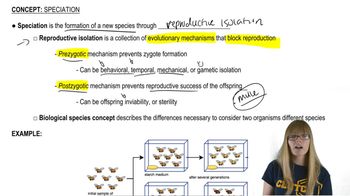Here are the essential concepts you must grasp in order to answer the question correctly.
RNA Interference (RNAi)
RNA interference is a biological process in which RNA molecules inhibit gene expression or translation, effectively silencing specific genes. This mechanism is crucial for regulating gene activity and defending against viral infections. RNAi is mediated by small RNA molecules, such as small interfering RNA (siRNA) and microRNA (miRNA), which bind to complementary mRNA sequences, leading to their degradation or preventing their translation.
Recommended video:
Mechanism of RNAi
The mechanism of RNA interference involves the processing of double-stranded RNA (dsRNA) into small RNA fragments by an enzyme called Dicer. These small RNA molecules then incorporate into a protein complex known as the RNA-induced silencing complex (RISC). The RISC uses the small RNA as a guide to recognize and bind to complementary mRNA, resulting in its degradation or inhibition of translation, thereby silencing the target gene.
Recommended video:
Applications of RNAi
RNA interference has significant applications in research and medicine, particularly in gene silencing and therapeutic interventions. For example, scientists can use RNAi to knock down the expression of specific genes to study their function or to develop treatments for diseases such as cancer and viral infections by targeting and silencing disease-related genes. This technology holds promise for developing novel therapies and understanding complex genetic pathways.
Recommended video:
 Verified step by step guidance
Verified step by step guidance Verified video answer for a similar problem:
Verified video answer for a similar problem:

